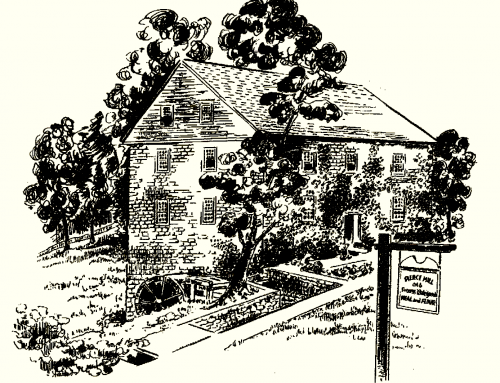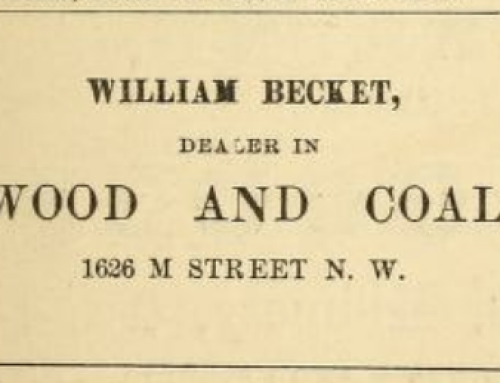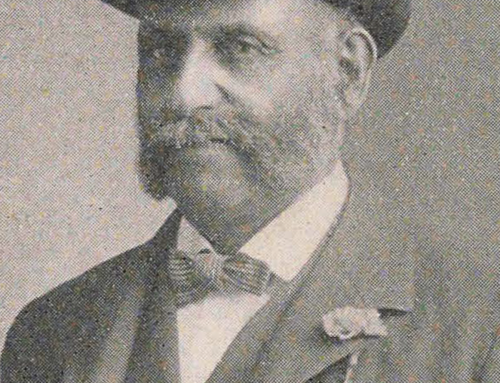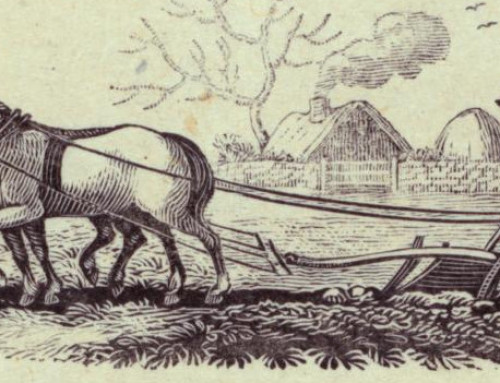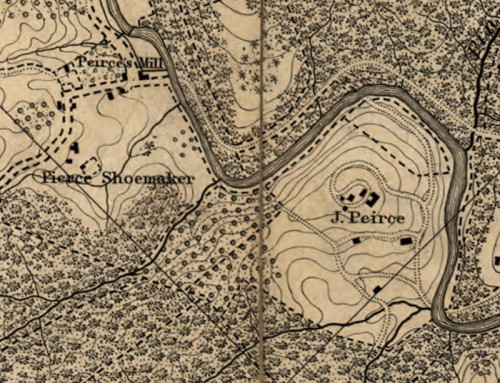Hattie Sewell and the Peirce Mill Teahouse
In 1920, Rock Creek Park’s managers awarded a contract to run the teahouse at Peirce Mill to an African American woman named Hattie Sewell. But after a prominent neighbor’s racist complaints, she lost the contract in the fall of 1921. One hundred years later, with funding from Humanities DC, the Friends of Peirce Mill worked with student interns from Howard University to create a short film about Sewell’s life. But because the National Archives were closed during the Covid pandemic, they were unable to access government correspondence files. The Archives have since reopened, and recently uncovered letters shed new light on what happened at Peirce Mill a century ago.
On November 2, 1919, Sewell sent this letter to Col. Clarence S. Ridley, the officer in charge of Rock Creek Park. An experienced businesswoman, she was interested in managing the teahouse at Peirce Mill.
Click here to read Hattie Sewell’s letter.
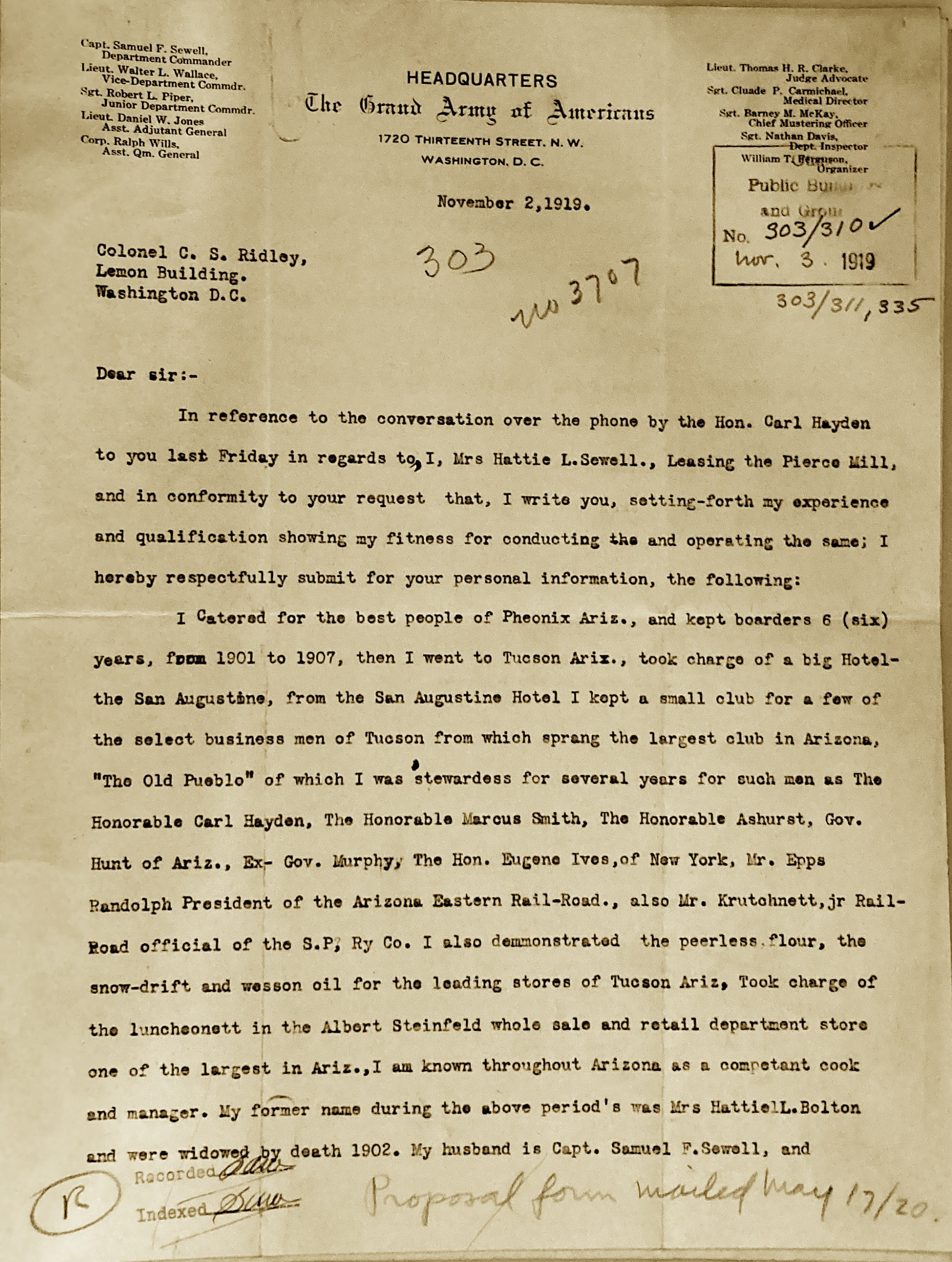
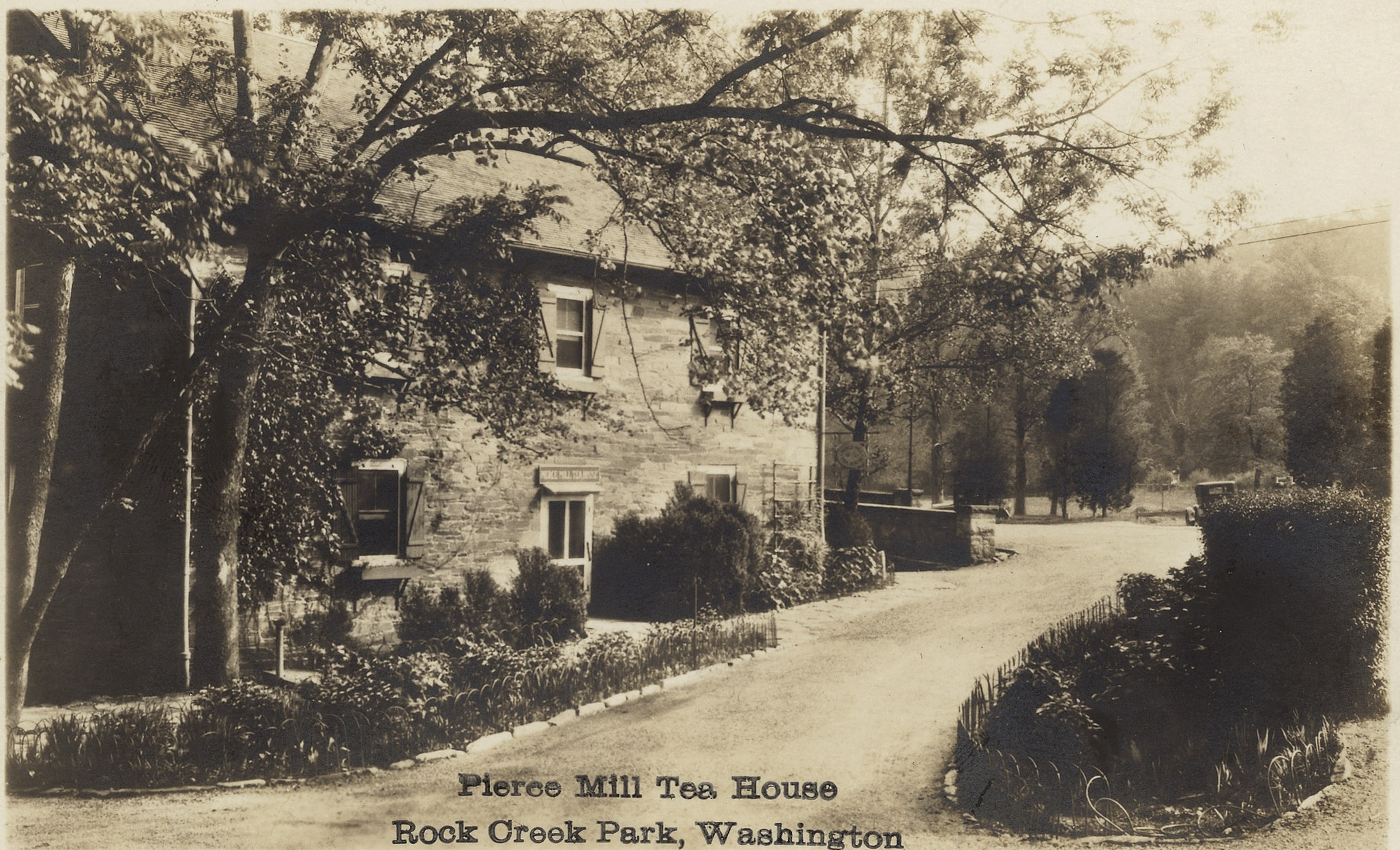
The following summer, Sewell began paying
$45 a month to the
Office of Public Buildings and Grounds
to rent the teahouse
at Peirce Mill.
On July 10, 1920, Sewell placed this advertisement for her new business in the Washington Times.
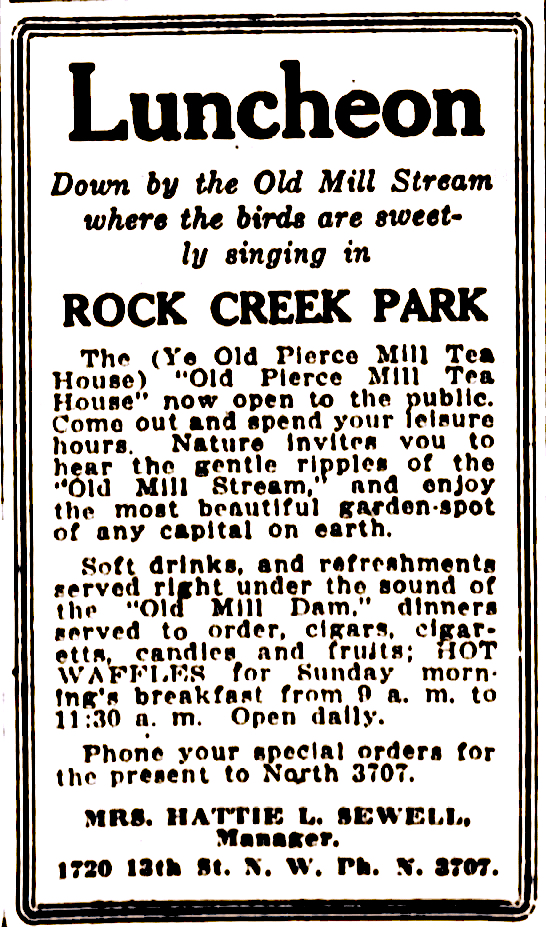
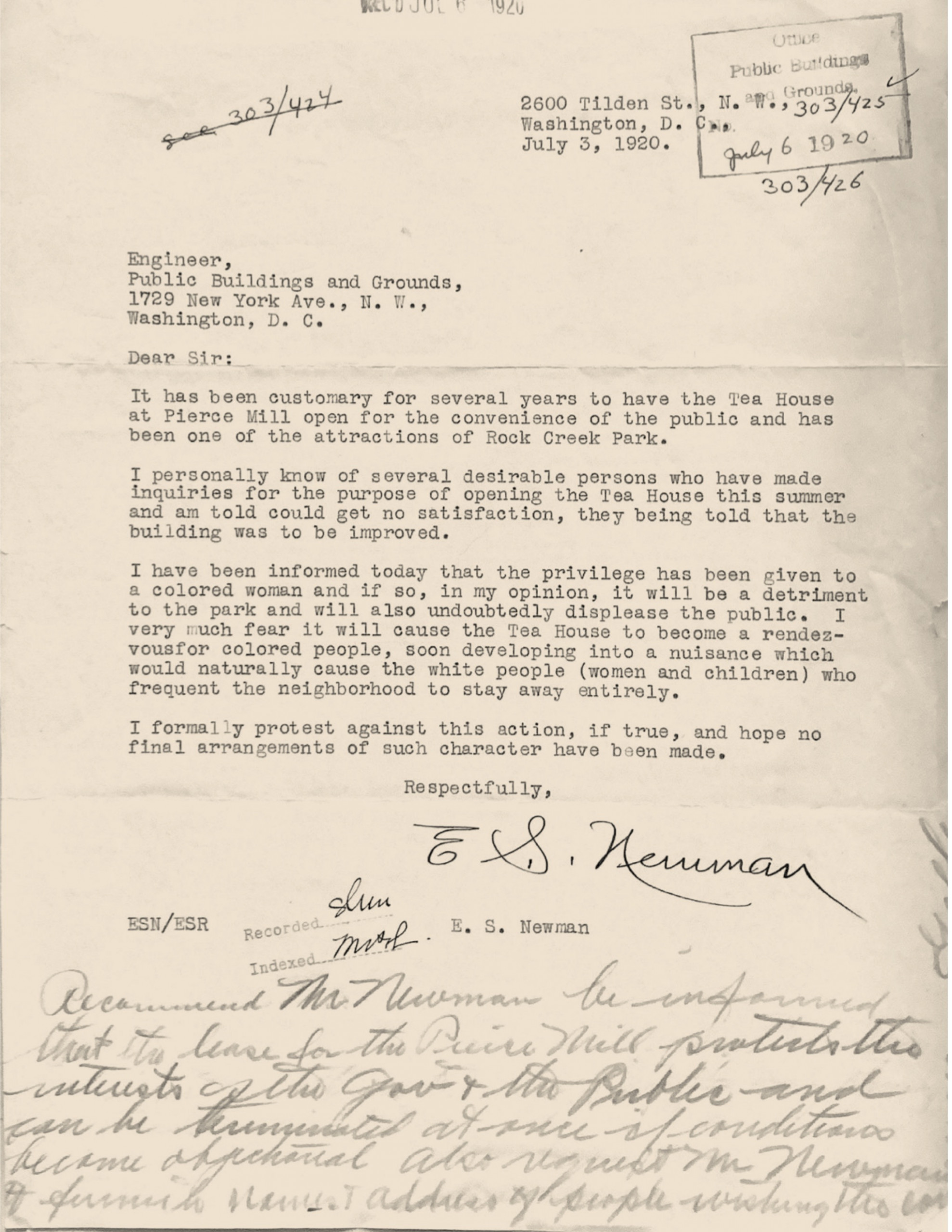
But even before Sewell’s advertisement ran in the newspaper, E.S. Newman–a neighbor and Peirce family member–had complained about a Black woman running the teahouse.
Click here to read Newman’s letter.
Rock Creek Park received no other complaints about Sewell, and she increased business at the teahouse.
But Newman’s complaints continued. In the fall of 1921, the park’s new manager, Lt. Col. Clarence O. Sherrill, declined to renew Hattie Sewell’s contract, and awarded the teahouse concession to the Girl Scouts.
Just 6 months after she left Peirce Mill, Hattie Sewell had opened a new delicatessen on 14th Street.
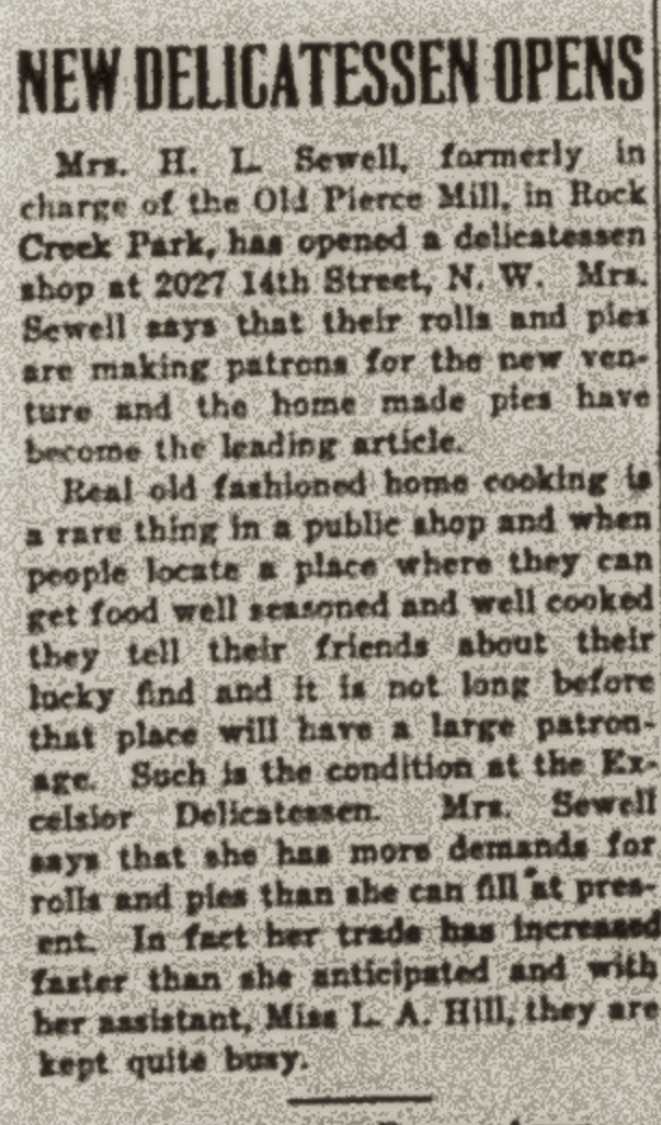
For more information about Hattie Sewell and the Peirce Mill teahouse, please see the Fall 2022 issue of Washington History.

